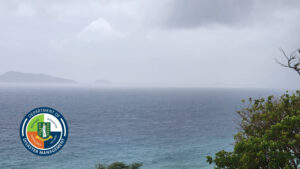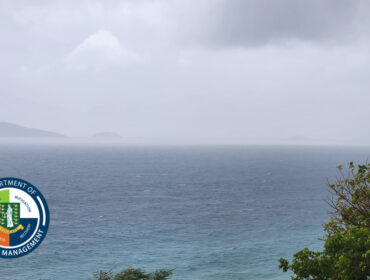28th March 2018 – A special marine statement for high surfs is in effect for the British Virgin Islands (BVI) from Wednesday morning until Thursday night, and for Antigua and Barbuda the rest of the Leeward Islands from Wednesday afternoon until Thursday night.
Long northerly swells will cause very hazardous breaking waves (high surfs), powerful life-threatening rip currents and possibly flooding of some low-lying coastal areas. These swells will present an especially heightened threat to life and property in the surf zone.
High surf (sea-bather) warning is in effect especially for exposed and shallow coastal areas.
High surfs (breaking swells): Swells of 2 to 3 metres or 6 to 10 feet and occasionally higher, with breaking waves (surfs) of 2.5 to 4 metres or 8 to 13 feet.
Coastal flooding: High tides combine with onshore wind and swell actions will result in some beach erosion and could cause some coastal flooding. Coastal residents in the warned area should be on the alert for above normal water levels and take appropriate actions to protect life and property.
Locations (to be) affected: Mainly exposed and shallow northern facing beaches of Barbuda, Anguilla and the BVI.
Timing: Until Thursday night.
Impacts (possible/likely/expected): Loss of life – strong currents that can carry even the strongest swimmers out to sea; injuries to beachgoers; beach erosion; sea water splashing onto low lying coastal roads; beach closures; localized disruptions to marine recreation and businesses; financial losses; damage to coral reefs; salt water intrusion and disruptions to potable water from desalination. High surfs can knock spectators off exposed rocks and jetties. Breaking waves may occasionally impact harbours making navigating the harbour channel dangerous.
Precautionary/preparedness actions: A high surf warning means that dangerous battering waves will pound the shoreline, producing life threatening conditions. No one should enter the water, especially on the northern side of the islands.
Rip currents are powerful channels of water flowing quickly away from shore, which occur most often at low spots or breaks in the sandbar and near structures such as groins, jetties and piers.
If caught in a rip current, relax and float. Don`t swim against the current. If able, swim in a direction following the shoreline. If unable to escape, face the shore and call or wave for help.
Forecaster Dale Destin





